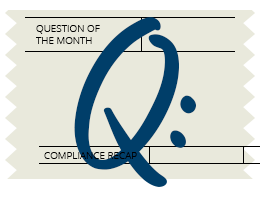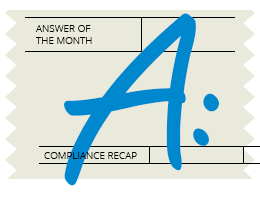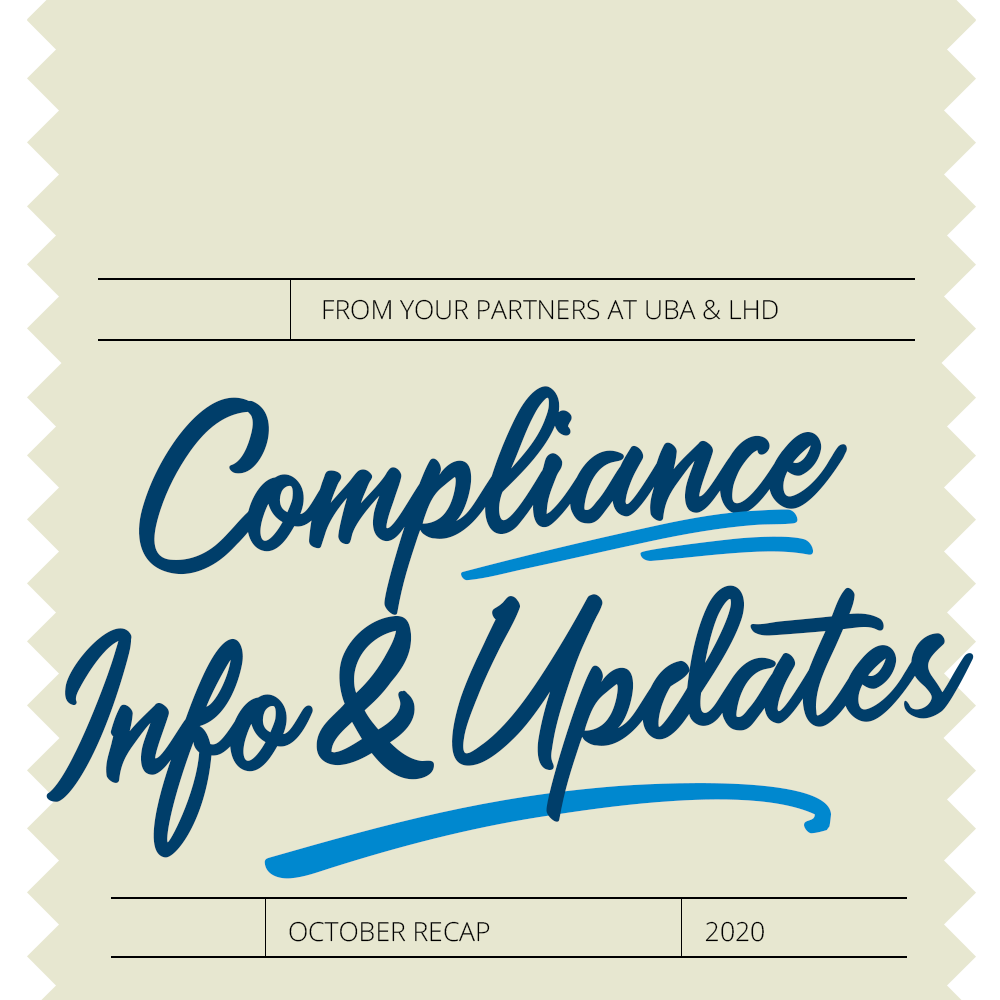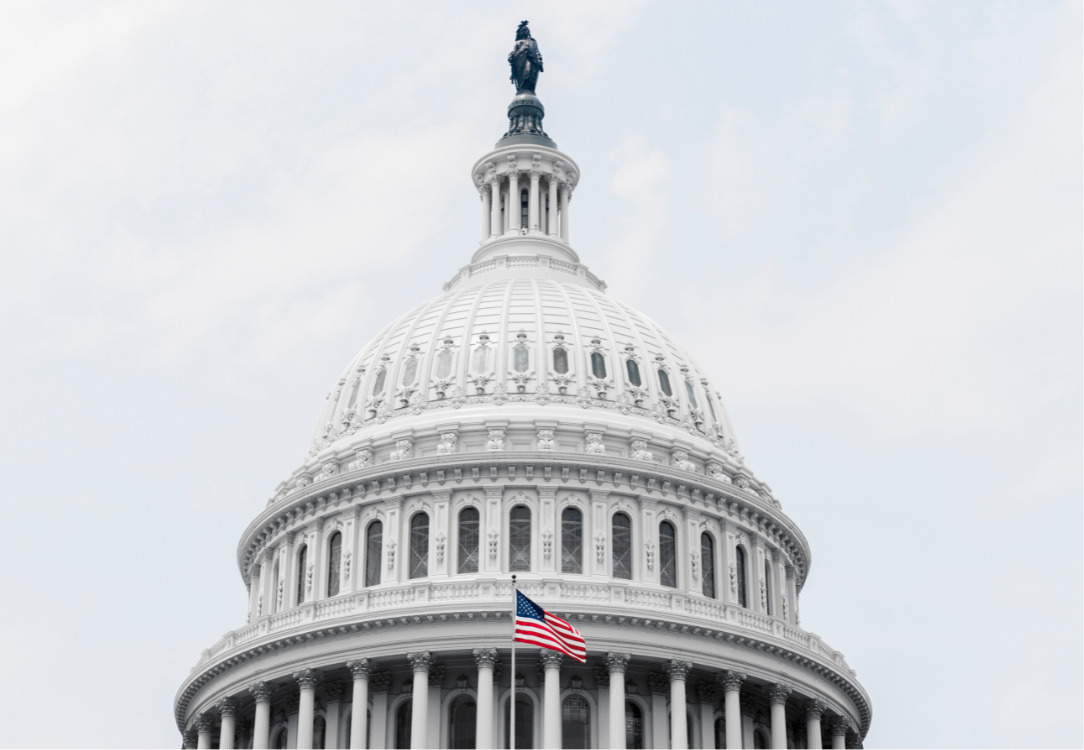Compliance Recap
The Department of Health and Human Services (HHS) renewed the public health emergency due to COVID-19 which took effect on October 23, 2020. The Internal Revenue Service (IRS) issued Notice 2020-76 regarding deadline extensions and requirements for reporting of group health coverage offered in 2020 under the Patient Protection and Affordable Care Act (ACA) as it has done in prior years.
The IRS released final instructions for both the 1094-B and 1095-B forms and the 1094-C and 1095-C forms and the final forms for 1094-B, 1095-B, 1094-C, and 1095-C. The IRS released Notice 2020-79 and Rev. Proc. 2020-45 regarding health plan limits as well as various compensation, benefit, and contribution levels under qualified retirement plans for 2021.
The Department of Labor (DOL), HHS, and the Department of the Treasury (Treasury) (collectively, the Departments), released interim final rules regarding implementation of the CARES Act regarding plan and issuer coverage of COVID-19 diagnostic tests and coverage of coronavirus preventive services.
The IRS released final regulations clarifying the income test for being a qualifying relative. The Departments released final rules on coverage transparency requiring group health plans and insurance issuers in the individual and group markets to disclose cost-sharing information and negotiated rates.
The DOL released the Final 2020 Mental Health Parity and Addiction Equity Act (MHPAEA) Self-Compliance Tool. The U.S. Supreme Court heard oral arguments in the Rutledge v. Pharmaceutical Care Management Association case.
UBA Updates
UBA released new advisors:
- IRS Notice 2020-76
- IRS Releases Final Forms and Instructions for 2020 ACA Reporting
- 2020 ACA Reporting for Individual Coverage Health Reimbursement Arrangements
- U.S. Supreme Court and the Future of the Affordable Care Act
- 2021 Annual Benefit Plan Amounts Card
- IRS Releases 2021 Benefit Plan Limit Cost-of-Living Adjustments
- Final Rules on Coverage Transparency
- Additional Policy and Regulatory Revisions Response to the COVID-19 Public Health Emergency Interim Final Rules
UBA updated, refreshed, or revised existing guidance:
- MLR Rebate Considerations – Private Plans
- Update on Tri-Agency Final Rules on Health Reimbursement Arrangements
- What You Need to Know about Health Flexible Spending Accounts
- Qualified Small Employer Health Reimbursement Arrangements FAQ
- HRAs, HSAs, and Health FSAs – What’s the Difference?
- Health Reimbursement Arrangements Comparison Chart
HHS Renews COVID-19 Public Health Emergency Determination
HHS extended the duration of the public health emergency due to COVID-19 effective on October 23, 2020. Generally, a public health emergency declaration lasts for 90 days (this
would make the new end date January 21, 2021). Under the Families First Coronavirus Response Act (FFCRA), as amended by the Coronavirus Aid, Relief, and Economic Security Act (CARES Act), a group health plan must provide coverage without cost sharing for in vitro diagnostic tests for detection of SARS-CoV-2 or the diagnosis of COVID-19 and the administration of such tests for the duration of the public health emergency due to COVID-19. HHS recently extended the duration of the public health emergency due to COVID-19 to January 21, 2021. HHS has previously extended the end date of the public health emergency multiple times so employers should stay apprised of any further extensions.
Read more about the FFCRA’s group health plan coverage requirements.
IRS Issues Notice 2020-76
As the deadline for reporting of group health coverage offered in 2020 under the ACA approaches, the Internal Revenue Services (IRS) has issued IRS Notice 2020-76 (Notice) regarding deadline extensions and requirements as it has done in prior years. Under the Notice, the IRS extended its good faith relief for group health coverage offered in 2020. As in prior years, the relief is applied only to incorrect or incomplete information reported on the statement or return in good faith. The Notice provides that this is the final year the Treasury Department and the IRS intend to provide this relief.
Under the Notice, the IRS extended the due date for furnishing statements to individuals (Form 1095-B and 1095-C) from February 1, 2021 (the normal due date is January 31, however in 2021, that date falls on a weekend), to March 2, 2021. The IRS notes that unless it receives comments as to why relief continues to be necessary, no relief for furnishing statements will be granted in future years. The permissive 30-day extension that the IRS may grant to an employer for good cause will not apply to this extended due date for furnishing statements to individuals. The Notice also provides that the IRS will not assess a penalty for failing to furnish Form 1095-B to individuals if certain conditions are met.
The Notice does not extend the due date for filing Forms 1094-B, 1095-B, 1094-C, or 1095-C with the IRS for calendar year 2020. Forms 1094-B, 1095-B, 1094-C, and 1095-C must be filed by February 28, 2021, or March 31, 2021, if filing electronically.
Read more about the Notice.
IRS Releases Final Forms and Instructions for 2020 ACA Reporting
The IRS released final instructions for both the 1094-B and 1095-B forms and the 1094-C and 1095-C forms and the final forms for 1094-B, 1095-B, 1094-C, and 1095-C. The forms have generally remained unchanged from prior years. However, there are changes to the 2020 reporting forms that employers should be aware of, including the now mandatory “plan start month” box and how to report individual coverage health reimbursement arrangements. Read more about the reporting forms and changes for 2020 in the UBA Advisors “IRS Releases Final Forms and Instructions for 2020 ACA reporting” and “2020 ACA Reporting for Individual Coverage Health Reimbursement Arrangements.”
IRS Releases 2021 Inflation-Adjusted Limits
The Internal Revenue Service (IRS) released IRS Notice 2020-79 and Rev. Proc. 2020-45 regarding health plan limits such as the health flexible spending arrangement (FSA) contribution limit of $2,750, as well as various compensation, benefit, and contribution levels under qualified retirement plans for 2021.
The IRS also released the excepted benefit health reimbursement arrangement limit for 2021 at $1,800.
Download a summary of the 2021 annual benefit plan limits.
IRS, DOL, HHS Release Interim Final Rules on Coverage of COVID-19 Diagnostic Tests and Preventive Services
The Departments released interim final rules regarding implementation of the CARES Act regarding plan and issuer coverage of COVID-19 diagnostic tests and coverage of coronavirus preventive services.
The interim final rules became effective on November 2, 2020, and will remain in effect until the end of the public health emergency for COVID-19 as determined by the HHS Secretary. Comments on the interim final rules may be submitted by 5:00 p.m. on January 4, 2021.
Read more about the interim final rules.
IRS Releases Final Regulations on Definition of Qualifying Relative
The IRS released final regulations clarifying the income test for being a qualifying relative. The IRS defines a dependent as a “qualifying child” or a “qualifying relative.” One the requirements of being a qualifying relative is that the individual must satisfy the income test (the individual’s gross income does not exceed the personal exemption amount), which is based on the personal exemption amount under Internal Revenue Code Section 151(d). The Tax Cuts and Jobs Act reduced the personal exemption to zero for taxable years 2018 through 2025. However, the IRS final rule provides that during this period the exemption amount would be treated as $4,150 (adjusted for inflation).
While the income test does not apply for health coverage purposes (whether an individual is a dependent for purposes of a cafeteria plan), the test does apply for determining whether an individual is a tax dependent, and therefore, whether he or she can contribute to their own health savings account (HSA). If an individual can be claimed as a tax dependent on someone else’s tax return, he or she cannot be HSA eligible.
IRS, DOL, HHS Release Final Rules on Coverage Transparency
The Departments released final rules on coverage transparency. The final rules seek to give an estimate of plan participants’ potential cost-sharing liability for covered items and services they might receive from a particular health care provider. The final rules require group health plans and insurance issuers in the individual and group markets to disclose cost-sharing information and negotiated rates.
The final rules also allow issuers that encourage participants to shop for lower cost services to take credit for “shared savings” payments they provide to participants in their medical loss ratio (MLR) calculations. HHS released a fact sheet and press release regarding the final rules.
The final rules regarding disclosure of cost-sharing information and public disclosure of negotiated rates and allowed amounts become effective under a three-year phased in approach beginning January 1, 2022, through January 1, 2024. The final rule regarding the MLR calculation takes effect beginning with the 2020 MLR reporting year.
Read more about the final rules.
DOL Releases the Final 2020 MHPAEA Self-Compliance Tool
The DOL released the Final 2020 MHPAEA Self-Compliance Tool, which updates its 2018 MHPAEA Self-Compliance Tool. The DOL also released a preface to the tool and a press
release. The DOL publishes the MHPAEA Self-Compliance Tool to help group health plan sponsors and administrators, as well as other entities, determine whether a group health plan or health insurance issuer is in compliance with the Mental Health Parity and Addiction Equity Act of 2008 (MHPAEA) and its regulations. The MHPAEA generally requires that the financial requirements and treatment limitations imposed by a group health plan or health insurance issuer on mental health and substance use disorder benefits not be more restrictive than the predominant financial requirements and treatment limitations that apply to substantially all medical and surgical benefits.
The updated tool integrates prior guidance published in FAQs on the implementation of the MHPAEA. The updated tool adds explanations of how plans and issuers can correct compliance violations and provides additional examples of how to comply with the MHPAEA. The updated tool provides best practices for establishing an internal compliance plan and provides examples of the types of records that a plan or issuer may need to provide in the event of a DOL investigation.
Finally, the updated tool provides additional examples of treatment limitations encountered in recent federal and state investigations that may be warning signs of a potential violation.
Read more about the FAQs.
U.S. Supreme Court Hears Oral Arguments in ERISA Preemption Case
The U.S. Supreme Court heard oral arguments in the Rutledge v. Pharmaceutical Care Management Association case. The case addresses the issue of whether an Arkansas state law regulating pharmacy benefit managers’ (PBM) drug reimbursement rates is preempted by ERISA. Under ERISA, state laws that are either impermissibly connected to ERISA or reference ERISA plans are preempted, meaning ERISA plans will not be required to comply with the state laws. While the case only addresses the Arkansas state law, many states have enacted laws similar to the Arkansas law.
The Arkansas state law prohibits PBMs from reimbursing pharmacies at a rate less than what it costs pharmacies to purchase drugs from a wholesaler. The Arkansas law also includes an appeal procedure under which pharmacies can challenge PBM reimbursements that are less than what the pharmacy paid to acquire the drug and allows pharmacies refuse to provide a prescription to an individual if the PBM’s reimbursement rate for the drug is less than what the pharmacy paid to acquire the drug from a wholesaler.
A decision from the U.S. Supreme Court is expected by June 2021.
Question of the Month
 Do individuals still need to be sent Form 1095-B as part of a health coverage provider’s requirements under ACA reporting?
Do individuals still need to be sent Form 1095-B as part of a health coverage provider’s requirements under ACA reporting?
 Because the individual shared responsibility payment has been reduced to $0 as of January 1, 2019, the IRS will not assess a penalty for failing to furnish Form 1095-B to individuals if two conditions are met:
Because the individual shared responsibility payment has been reduced to $0 as of January 1, 2019, the IRS will not assess a penalty for failing to furnish Form 1095-B to individuals if two conditions are met:
- The reporting entity posts a notice prominently on its website stating that individuals may receive a copy of their 2020 Form 1095-B upon request, accompanied by an email address and a physical address to which a request may be sent, and a telephone number that individuals can use to contact the reporting entity with any questions.
- The reporting entity furnishes a 2020 Form 1095-B within 30 days of the date the request is received.
This relief also applies to reporting entities that are required to furnish Form 1095-C to any employee enrolled in the reporting entity’s self-funded health plan who is not a full-time employee for any month of 2020.


